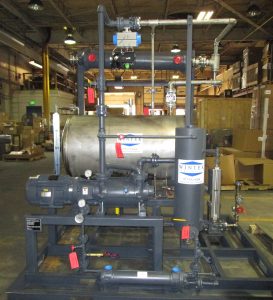Building materials, metals and mining industries often use vacuum degassing to strengthen products. Additionally, plastics and rubber manufacturing facilities utilize degassing processes.
Degassing removes encapsulated gasses from compounds caused by mixing components. For example, a step in the process of resin and epoxy manufacturing can trap gasses within the compound. This gas can be the cause of structural failures and points of weakness if not removed. Gasses in these compounds are detrimental in the finished cast or cure because the pockets of gas cause nodules, cavities, or hollows.
In terms of metals and mining, vacuum degassing yields stronger steel. Vacuum degassing removes hydrogen gas from molten steel so as to prevent defects like hydrogen flaking. Hydrogen flaking decreases the yield strength of steels and can cause structural failure if left untreated.
The purpose of steel degassing include the reduction of dissolved gases, reduction of dissolved carbon to create more ductile steel, and oxidation of dissolved carbon over chromium when refining stainless steel grades. Because numerous load-bearing applications use steel, it is imperative to use the highest strength material possible. Degassing this metal is one way to increase the tensile strength of the material.
Vacuum degassing is essential in terms of plastics and rubber manufacturing because it can affect the integrity of the cast or mold and damaged products in finished process.
Wintek generally utilizes the ruggedness and robustness of the liquid ring vacuum pumps for degassing applications. During the process, there’s a chance for some process carryover that the liquid ring pump can handle without issue.

